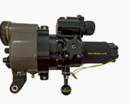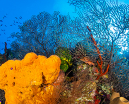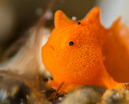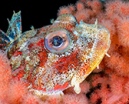Articles

Review: SmallHD monitor in Nauticam NA-DP4 housing
Norbert Wu presents a review of the SmallHD 4.3” DP-4 monitor with the Nauticam NA-DP4 housing. He cites that whilst SLRs are quite capable of producing good video quality, the ergonomics of framing and focusing on the subject using the camera’s LCD screen makes for disappointing results. External monitors address this deficiency, and Norbert found that using one improved his productivity underwater. He found that he could not judge critical focus with it, but also admits that he did not use the peaking or focus assist modes on the monitor. He says:
“Having the image up on top of the camera in any position I want it, makes all the difference in the world.”
Wetpixel are currently reviewing this monitor and housing combination as well. Please stay tuned for additional field reports.

Reef Creature Identification guide available as an ebook
New World publications has just released the second in its series of ebooks: The Reef Creature Identification: Tropical Pacific guide has joined its sister publication, Reef Fish Identification: Tropical Pacific, and is now available in Blio format for Android, iPad, iTouch, iPhone and Windows PC computers. It features sixteen hundred species of marine invertebrates, which are searchable in the app via a page specific table of contents and a scrolling toolbar.
The app is now available on Blio in the US, Canada and Mexico, and should be rolling out to the UK soon. It is priced at $29.95.

Professionals provide views on the D4 and D800
Digital Photography Review has published an article with the views of four professional photographers about the new Nikon D4 and D800 SLRs. The photographers come from different genres of photography and are: Leon Neal (sport and news), Dan Chung (multimedia journalist), Neil Lupin (music) and Andy Sheppard (music). Overall, the reception to the new cameras is positive, and Dan Chung in particular seems to feel that the Nikons could now replace his Canons. The lack of a headphone jack and clean HDMI out on the EOS1-DX counts against it he feels, when compared with the D4 and D800. Neil Lupin is very positive about the increased low-light performance of the new cameras.
Although interesting, the article is only a pointer towards what the pros are thinking, as at the time of publishing, none of them have actually used the new cameras.

Shark fin ban for New York
The Wall Street Journal Metropolis reports that New York state lawmakers unveiled a bill Tuesday that would ban the sale, trade and possession of shark fin. If the proposal legislation is signed into law, New York will join Washington, Oregon, California and Hawaii in restricting shark products. Identical bills are expected to be introduced in both the state Senate and Assembly. Assemblywoman Grace Meng who co-sponsored the bill said:
“I know there are people who depend on this… for a living, and I know that this has a long tradition in Chinese culture. However, I believe it’s the right thing to do in terms of protecting our environment and protecting sharks.”

Final call: Wildlife Photographer of the Year 2012
The Veolia Environnment Wildlife Photographer of the Year is making its final call for entries. The contest has David Doubilet as one of the judges this year, and includes categories for animal portraits, behavior, animals in their environment and underwater worlds.
Full details are on the contest’s website, and the deadline is at 23:59 GMT on 23 February.

Guide to Tropical Marine Fish volume 4 released
Volume 4 of Andrea and Antonella Ferrari’s Guide to Tropical Marine Fish is now available on iTunes. The guide will eventually encompass 8 apps for iPhone, iPod Touch and iPad. Each app comprises an archive of 100 different tropical fish species, and aims to allow a full immersion into the reality of the underwater tropical marine universe. Within the app, all species have a full-screen zoomable photo and an info file describing common and scientific names, distribution, size, habitat, color, pattern, life habits and identification features.
Compatible with iPhone, iPod Touch, and iPad. The app is available now on iTunes and costs $2.99.

Shawn Heinrichs writes about Oslob whale sharks
In an article on his blog, Wetpixel moderator, Shawn Heinrichs, gives a personal perspective about the controversy around the feeding of whale sharks at Oslob, South Cebu, Philippines. Shawn’s group were amongst the first people to witness the interactions between the local fishermen and the sharks in early December 2011, and initially withheld information out of concern that the absence of regulation could cause a free-for-all to the sharks detriment. Once the story broke, he has been lobbying for regulation of tourism activities, and since late January, regulations have been in place. In his article, Shawn is optimistic about the long-term future of the whale sharks and their fishermen “companions”.
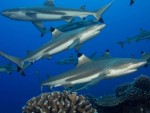
Study shows sharks form long-term social groups
A recently published study in the journal Animal Behavior provides evidence of the existence of social communities within a given network of a free-ranging shark species. The report’s authors, Johann Mourier, Julie Vercelloni and Serge Planes have produced association data for blacktip reef sharks (Carcharhinus melanopterus) via photo identification surveys conducted at the Moorea coral reefs in French Polynesia. This data demonstrates evidence of four main communities and two sub communities within the population. The study concludes:
“That the observed grouping patterns not only resulted from passive aggregations for specific resources, but rather the communities developed from an active choice of individuals as a sign of sociability.”

